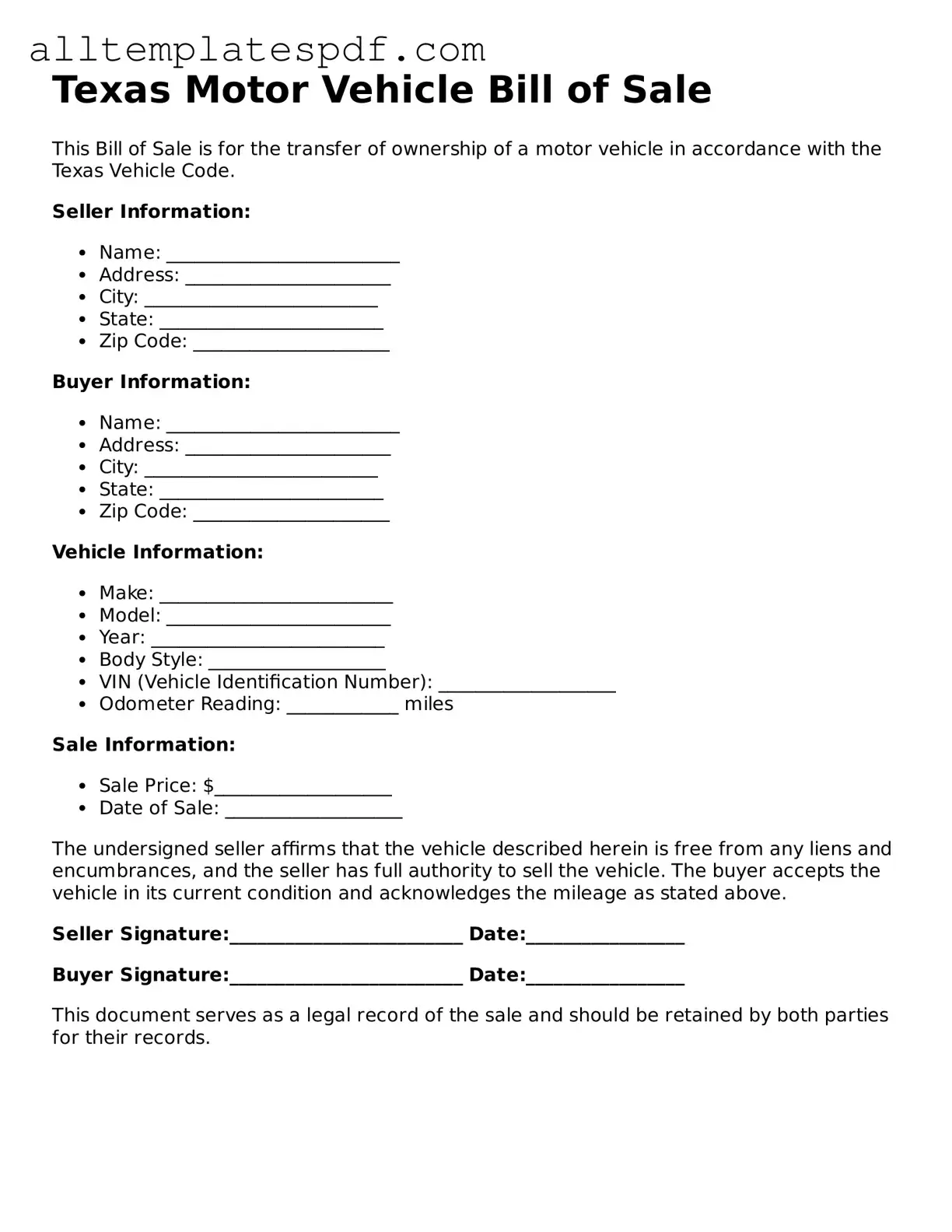Filling out the Texas Motor Vehicle Bill of Sale form can seem straightforward, but many individuals make common mistakes that can lead to complications down the road. One frequent error is neglecting to include the correct vehicle identification number (VIN). This number is crucial as it uniquely identifies the vehicle. Without it, the sale may be questioned, and ownership can become unclear.
Another mistake often made is failing to accurately record the sale price. The amount listed should reflect the actual transaction. If the price is too low or missing, it can raise suspicions during tax assessments. Remember, honesty is the best policy when it comes to reporting the sale price.
Many people also forget to sign the document. Both the seller and the buyer need to provide their signatures to validate the transaction. Without these signatures, the form may not be legally recognized, leaving both parties vulnerable to disputes.
Additionally, some individuals overlook the date of the sale. This detail is essential for establishing when the ownership transfer occurred. Missing this information can complicate matters if any issues arise later regarding the vehicle.
It’s also important to ensure that all names are spelled correctly. Errors in spelling can create confusion and may lead to problems when registering the vehicle in the new owner's name. Double-checking names can save a lot of hassle in the future.
Another common oversight is not providing the correct address for both the buyer and the seller. Accurate contact information is vital for any future correspondence regarding the vehicle. Incomplete or incorrect addresses can lead to significant delays in the registration process.
Some people mistakenly think they can leave the form blank in certain areas. Every section of the Bill of Sale should be filled out completely. Incomplete forms can lead to delays or even rejection by the Texas Department of Motor Vehicles.
Moreover, failing to keep a copy of the completed Bill of Sale can be a costly mistake. Having a record of the transaction is essential for both parties. It serves as proof of the sale and can be invaluable if any disputes arise later.
Finally, individuals sometimes forget to verify that the vehicle has no outstanding liens. Ensuring that the vehicle is free of any financial obligations is crucial. If there are existing liens, the buyer may find themselves responsible for debts they were unaware of at the time of purchase.
